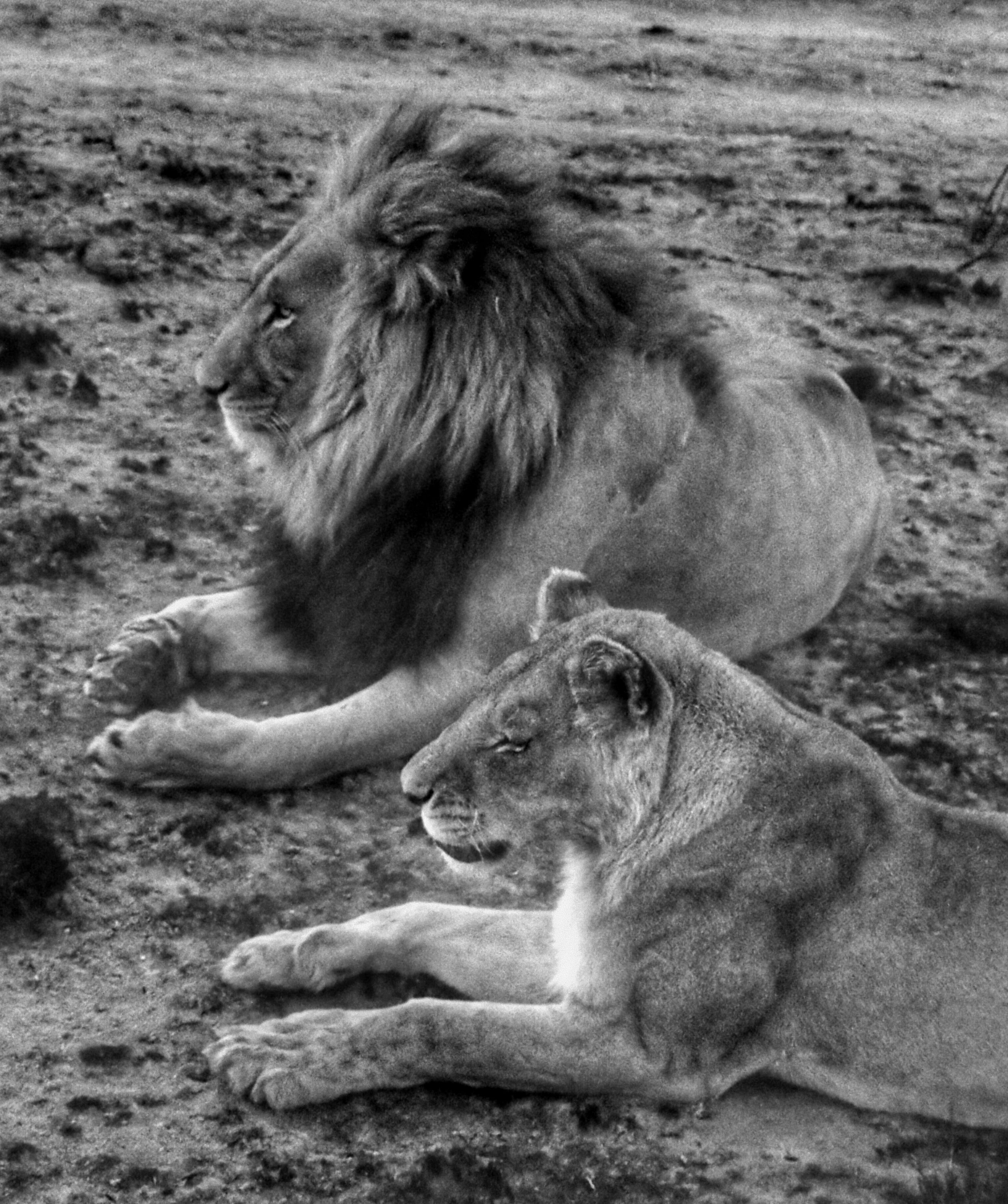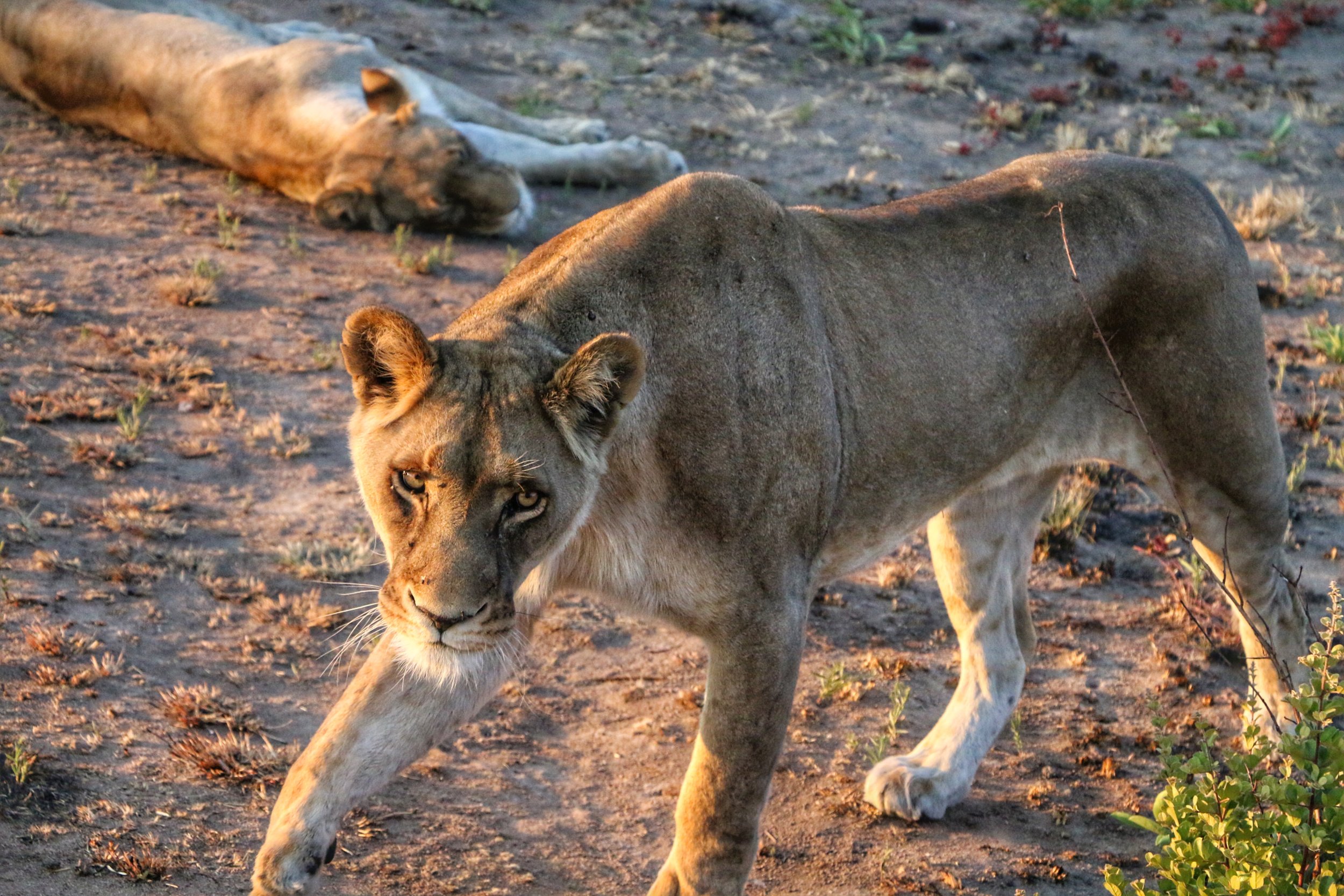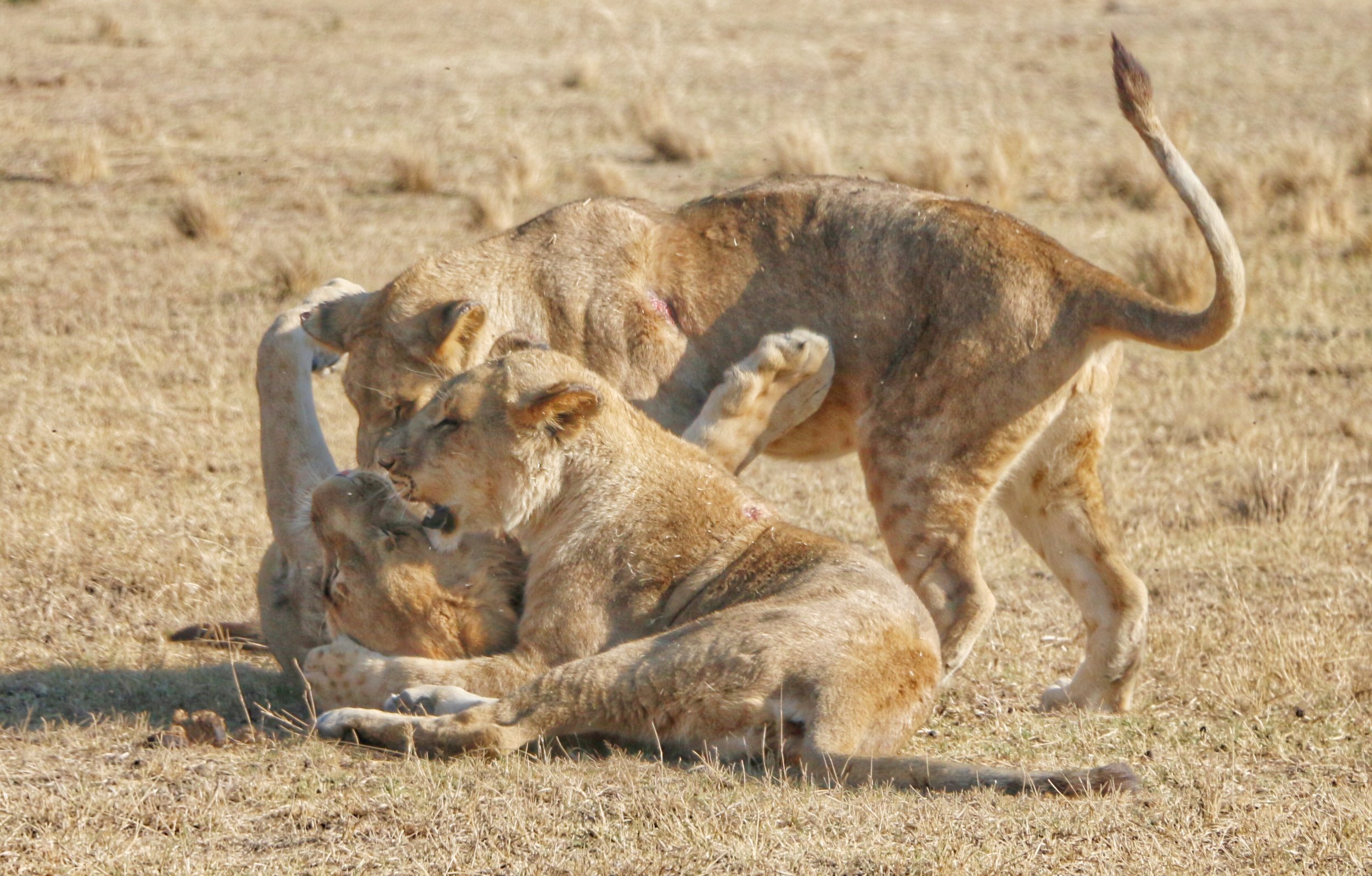surprisingly, we saw very few antelopes at Antelope Park
We’d visited a number of national parks, but Zimbabwe’s Antelope Park was our first private game reserve. It was established with a population of lions that had been kept as pets and as such had lost their fear of humans, making them unsuitable for release into the wild. Using them as a foundation, an ambitious breeding program has been undertaken. The plan is to breed the habituated lions, with their cubs (the second generation) having minimal human contact. Then they’ll breed the second generation and THEIR cubs (the third generation) will be suitably distanced from humans to be able to be released. Currently, they have a second generation ready for breeding, and are at work negotiating with locations to take the third generation cubs once they’re born and ready to be on their own.
A park like this offers very different types of activities compared to the other parks we had been visiting. The second generation pride is in a vast enclosure, and morning and afternoon research drives are offered to guests. On the research drive, the humans are in the cage and the lions roam free. Up to 6 guests can climb into the cage-covered bed of a pickup truck driven by the resident lion researcher. You are then driven into the enclosure and while the researcher collects data, you get to observe them.
my view from the people-cage on the research drive - the top had an opening so you could stand up to take photos
I loved the research drive. It was all the best parts of a game drive with none of the drawbacks: no pressure to hurry up and see the lions so you can drive off to see other things, no maneuvering around other safari vehicles, no groups of other people talking too loud and disrupting the atmosphere. It was just us and a pride of lions for 2 hours.
I thought it was strange to see so many animals in so many locations on or near trails, but a ranger said that animals are like humans in that they are often happy to take the easy path rather than go cross country
The pride consisted of 9 females and 2 males - as we were pulling in, they came over to investigate. A few of them sniffed the vehicle, and then they all settled in for a nap. Occasionally they would move to a different spot, or get up to nuzzle each other. And when our time was up, they were uncomfortably interested in following the truck, even loping alongside us for a short way. (I could have done without that level of interaction).
Another option is to watch a lion feeding. The lions that were kept as pets are still kept in enclosures and fed as a group every few days. They feed all the males at once, and use it as a way to measure dominance - then when they’re ready to breed, they’ll use the most dominant male in the hopes of passing on the strongest genes.
the next time I go to brunch, I’m going to fling myself bodily on the carving station to establish my dominance
Visitors are driven out to the feeding pen, where a pile of meat is waiting. We’re allowed to get in position, up close to the chain link fence. Then the lions are released into the pen, and the carnage begins. Holding your ground when a chain link fence is all that stands between you and a group of charging male lions is not easy, and it definitely gets your heart rate up. The two most dominant males flung themselves bodily atop the pile of meat. The less dominant ones pulled smaller scraps from the edges and retreated, but those two struggled for at least half an hour until once surrendered and left the pile.
these two were locked in a war of wills over who was going to get the biggest pile of meat - the one on the right won
to the victor go the spoils
The most popular activity at Antelope Park is the lion walk. This is an activity that will stop being offered in the next 2 years, as this is the last of the semi-habituated second generation lions on the property and once these 14-month-olds are old enough to join the pride they won’t have any lions that will tolerate walking with humans.
I did have to digitally neuter this young male lion, for the sake of internet decency
We walked with two females and a male, and they were very energetic. They were climbing trees, stalking a few impala, pouncing on each other. They weren’t terribly interested in us humans, but would occasionally flop down for a rest and we were able to take photos with them.
is there room for two?
nope.
IIf you go: Each activity at Antelope Park is individually priced, so you can make your own itinerary. We were told that mornings are the best time for a lion walk, as they tend to be more active and playful. That said, there are usually fewer people on the afternoon walk, so you might get a more personal experience. They also offer game drives (featuring zebra, wildebeest and giraffes), horseback riding and elephant interactions with their 4 rescued elephants.














